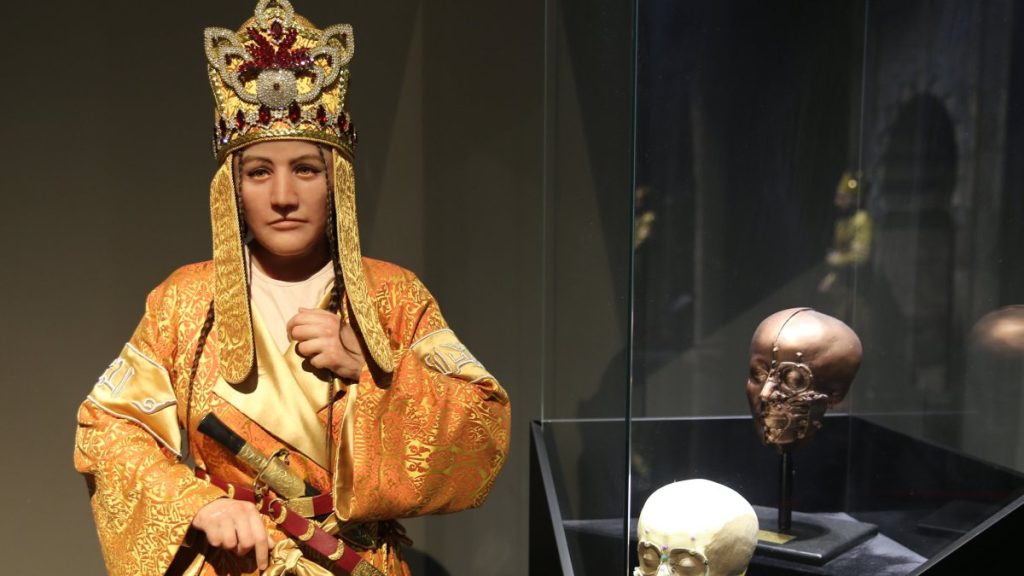Researchers have retrieved detailed insights into the profiles of several Anatolian Seljuk Dynasty members through DNA and anatomical analysis of remains retrieved from their tombs.
Professor Mutluhan Taş, a faculty member in the Department of Fine Arts at Gazi University’s Faculty of Education, and his team spent six years creating silicone statues that closely match the facial and bodily features of the sultans. This was part of the “Türkiye Seljukians’ Konya Dynasty Tomb Remains Arrangement Project.” During the process, Taş also uncovered valuable historical and genetic information about the royal family members.
The 17 statues, including 12 sultans, are currently on display at the Dar-ül Mülk Exhibition Palace in Konya, where they have been visited for nearly two years by the public.
In an interview with Anadolu Agency (AA), Taş explained that the project, which offers a significant contribution to Turkish history, was carried out in collaboration with osteoarchaeologist Emel Akpolat. He added that the project was launched in 2017 with the approval of the Ministry of Culture and Tourism and local authorities in Konya, aiming to preserve the physical integrity of the Anatolian Seljuk sultans.
The project initially focused on reassembling, cataloging and restoring bones that were missing parts of their skeletal structure. In later phases, a detailed study was conducted to reconstruct the faces of the sultans whose bodily integrity had been restored using silicone sculptures.
The long-term project involved experts in the field, with DNA samples taken from the sultans and sent to the Istanbul Forensic Medicine Institute. There, their genealogies, phenotypes (genetic and physical traits) and familial connections were identified. Additionally, physical features such as skin thickness and height were determined, which contributed to the facial reconstructions.
Diseases, causes of death identified
Taş also revealed that the research uncovered many details, including the diseases and causes of death of the Anatolian Seljuk sultans.
“According to the book of Ibn Bibi, considered a primary source on the history of the Anatolian Seljuk State, and descriptions by Byzantine historians, there were records suggesting that Sultan Kilij Arslan II was of very short stature. However, our study revealed that he actually stood at 1.83 meters (6 feet) tall. As he aged, his bone structure changed, causing a hunchback and giving the impression of a shorter height. Regarding Sultan Giyaseddin I, Byzantine historians stated that he was beheaded by a Byzantine knight, but our research showed that he was actually killed in battle by a surprise attack. We also found that Sultan Giyaseddin II, who lost the Battle of Köse Dağ, suffered from multiple genetic disorders, including rheumatoid arthritis, which caused serious issues with the shape of his skull.”
Taş expressed pride in the project, stating that the knowledge it provided about the Turkish nation, Turkish history and the Anatolian Seljuk sultans was of immense value.


